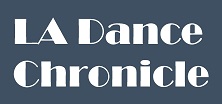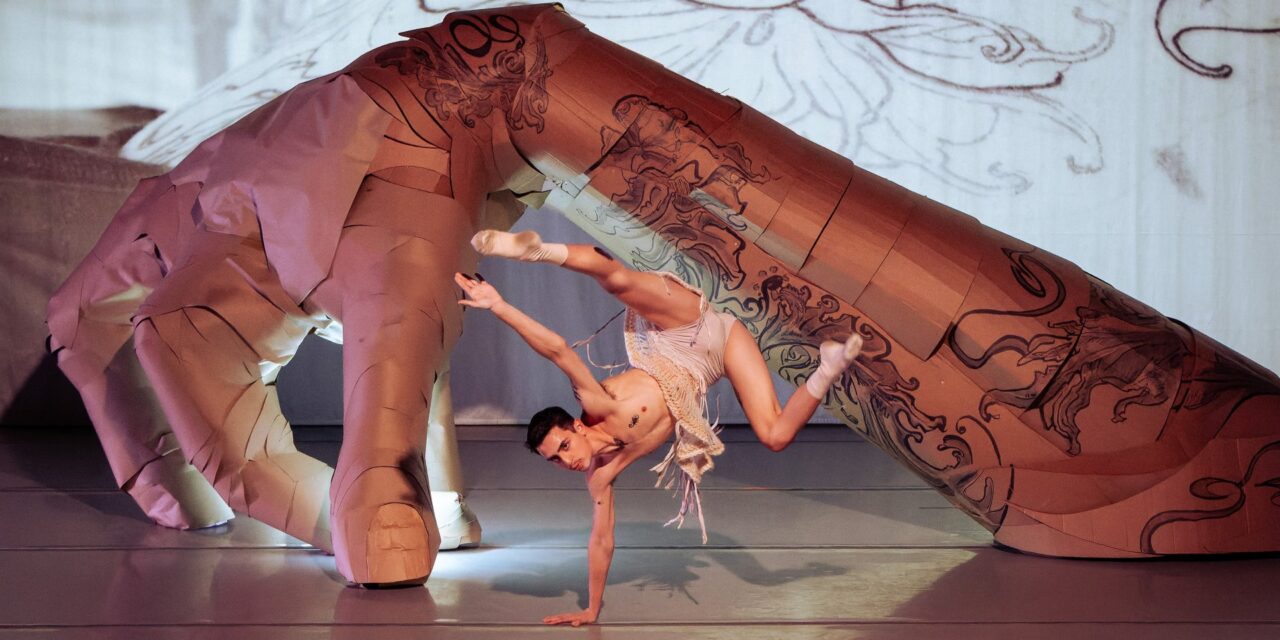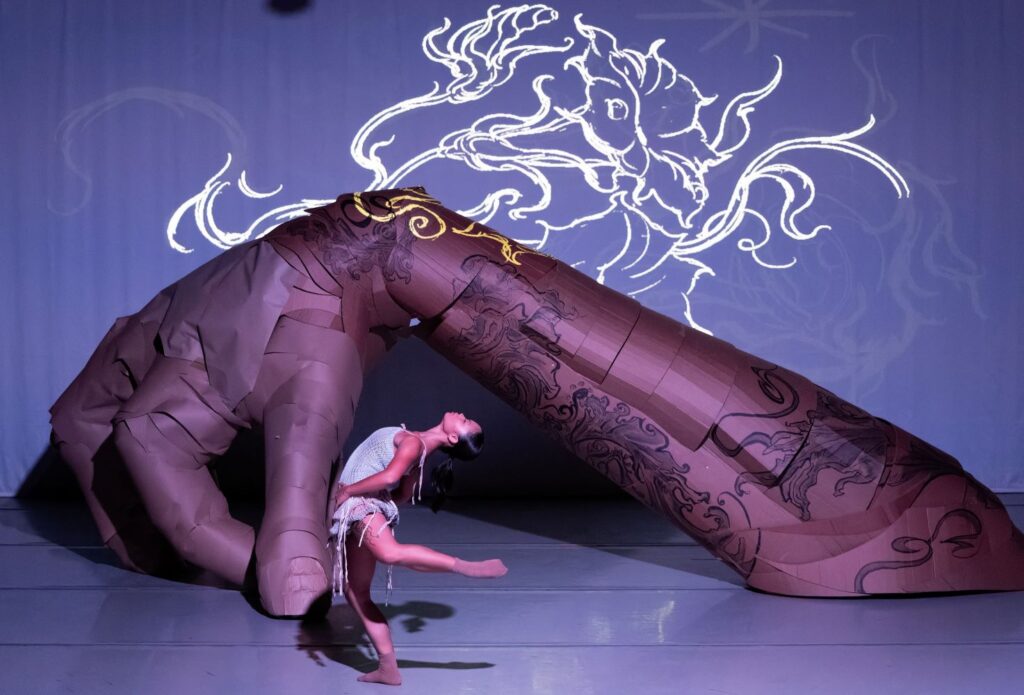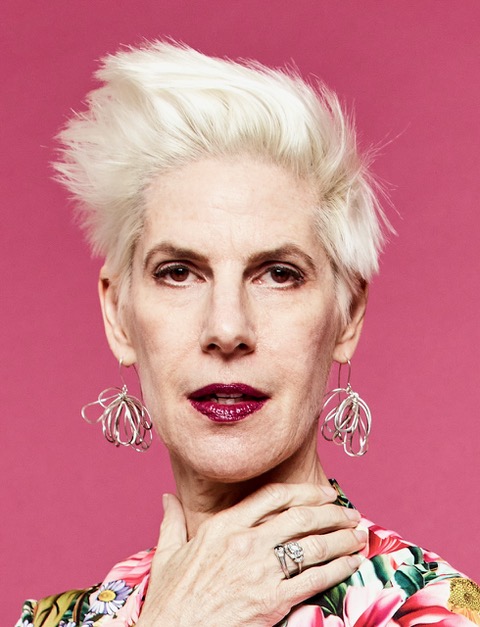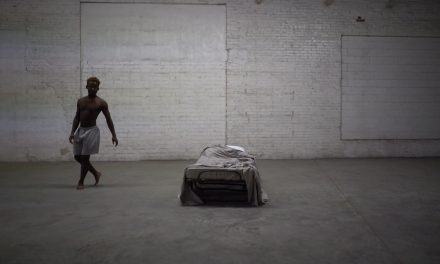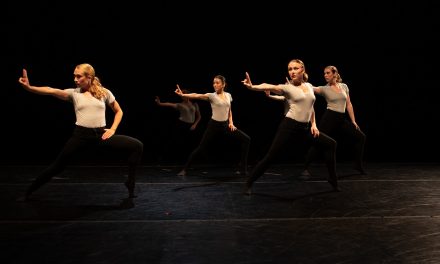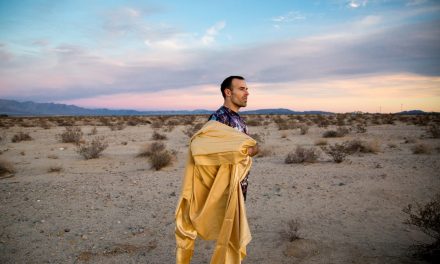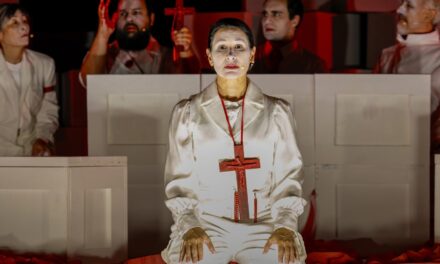A large sculpture of a hand and forearm filled center stage causing much thought as to what was about to take place in Laurie Sefton’s premiere of “How We Wear Our Art” on October 17, 2025 at L.A. Dance Project. What transpired was one of Sefton’s most adventurous collaborations to date involving dance, sculpture, tattoo art, music, film, lighting, and costumes. The result was prodigious and constantly forced the audience to make choices as to where to look in hopes of not missing anything.
One can never accuse Sefton of making the same work twice. Each piece has its own environment, statement on society and movement invention. Yes, she has a movement signature, but each work introduces a new look or feel so that one recognizes that Sefton choreographed the work, but yet, it is not quite equivalent. In “How We Wear Our Art”, Sefton continues to challenge the dancers’ technique with turns where they have to stop in relève or without moving out of the turn. Often the turns require them to execute extremely intricate arm, hand, or facial movements, gestures or expressions – sometimes all three. And yet, these dancers managed to accomplish what was asked of them while never losing their focus on fulfilling Sefton’s vision. The one thing that I would say to Ms. Sefton about this work it is that some of the movement become repetitive. This does not, however, detract anything from the power, worthiness or impact of “How We Wear Our Art“.
In an earlier press release, Sefton said that she had noticed that people, including dancers, were getting tattoos. Indeed, many of the performers in “How We Wear Our Art”, had tattoos somewhere on their body. The film that was projected along the back of the space showed tattoo artist Reiley Johnson applying her beautiful artwork to someone’s body. The film incorporated Johnson’s designs as did parts of Andy Bright’s sculpture, thus giving a unity to the two artforms.
The extraordinary dancers (Carmen Callahan, Jolyn Lambey, Rose Lindblom, Zachary Medina, Ishaun Jackson-Moaney, and Jane Zogbi) expressed Johnson’s designs with their movements. Arms, fingers, hands and hips swirled, curved and elongated into their own visual designs while being propelled forward by Bryan Curt Kostors’ astonishing score performed live by Kostors and percussionist Maxum Doucette. Kostors managed to fill the space to the bursting point and then whisper softly in our ears.
The costumes by Sophie Isabella Popha were simple but elaborate. Each dancer wore a short skirt with strips of fabric attached atop what appeared to be woven or knitted design. This not only allowed a kind of freedom for the dancers, but it also provided an extra sense of movement and flow.
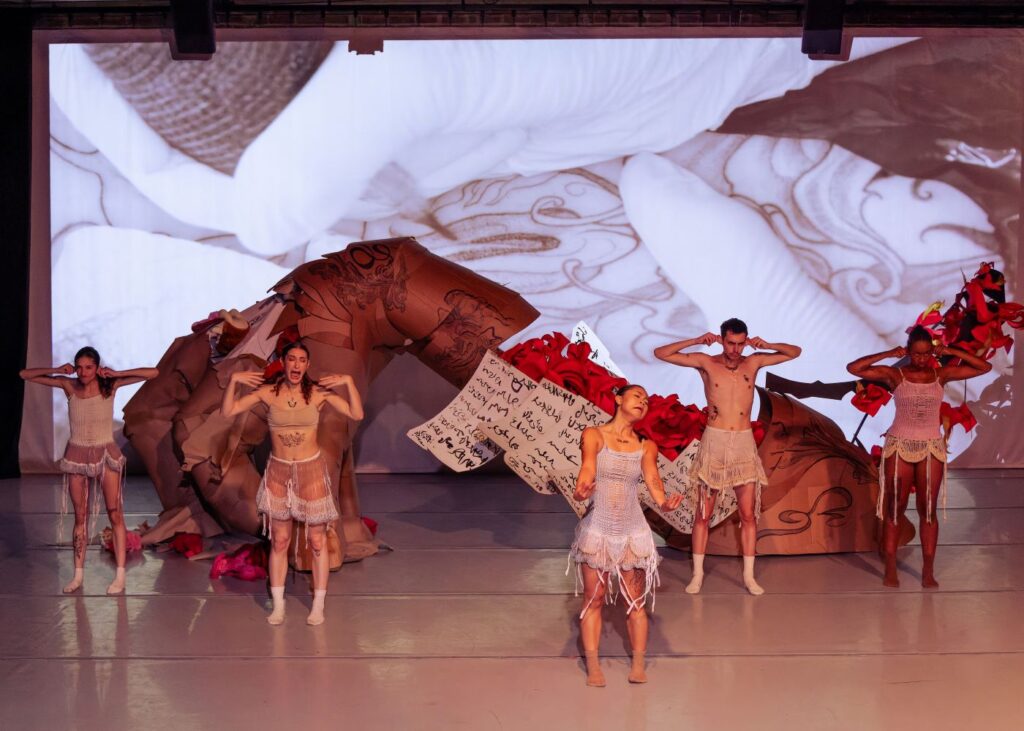
“How We Wear Our Art” choreography by Laurie Sefton – Dancers: Carmen Callahan, Jane Zogbi, Rose Lindblom, Zachary Medina, Jolyn Lambey – Photo by Hannah Cox.
The fingertips of the large hand rested upon the floor with the forearm extending out from there. As the dancers performed in groups, solos, duets and trios, they moved in front of, in back of, around and under Bright’s sculpture wonderfully integrating it into the work. There is a surprise that takes place with the sculpture which I hesitate to describe. What I will say is that there is far more to this piece of artwork than meets the eye.
As is her way, Sefton has studied a section of society and people’s behaviors to create a work that transports the audience into a section of our world that is often resisted or condemned. Many have trouble relating to body art and to the people who wear tattoos forever on their skin. Sefton shows us that perhaps we need to take a closer look and see the beauty of the designs. Tattooing is an artform and it deserves to have a place in the visual arts just as any other form of expression, cultural significance, and/or innovation can.
I for one truly admire Laurie Sefton’s determination to continue challenging herself choreographically and artistically. She has an eye on the world and continues to put that focus into her work in a way that we can visualize how she sees the rest of us.
“How We Wear Our Art” was Produced, Directed and Choreographed by Laurie Sefton; Music: Composed and Directed by Bryan Curt Kostors; Set Design/Sculpture/Fabrication: by Andy Bright; Film Concept and Direction: Laurie Sefton; and Costume/Fashion Design: Sophie Isabella Popha.
Dancers: Carmen Callahan, Jolyn Lambey, Rose Lindblom, Harry Louis Peterson (10/18), Zachary Medina (10/17), Kyle Schrader (10/18), and Jane Zogbi. ; Musicians: Bryan Curt Kostors and Maxum Doucette; and Featured Tattoo Artist: Reiley Johnson.
For more information about Laurie Sefton Creates, please visit their website.
To learn more about L.A. Dance Project, please visit their website.
Written by Jeff Slayton for LA Dance Chronicle.
Featured image: “How We Wear Our Art” choreography by Laurie Sefton, Dancer Zachary Medina – Photo by Hannah Cox.
